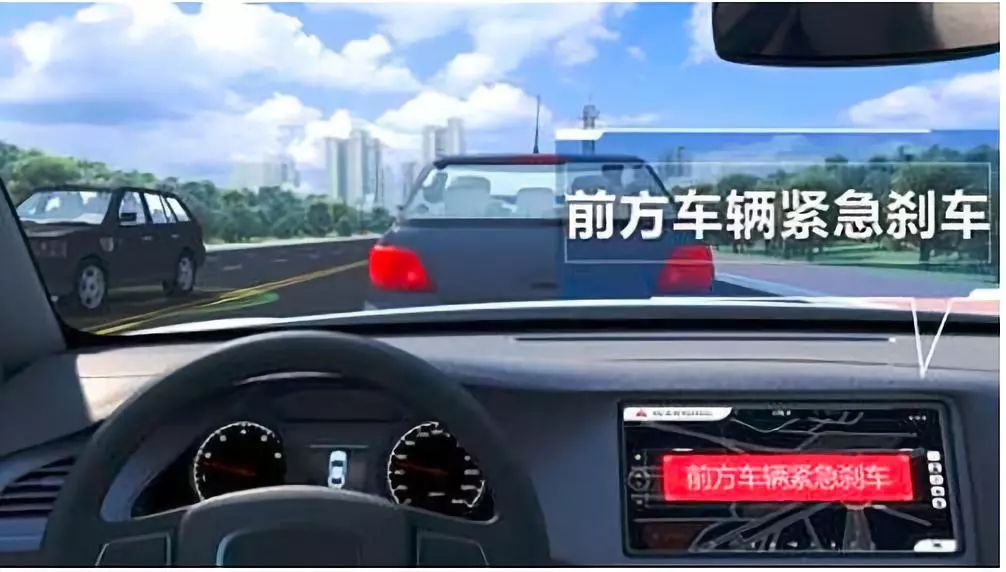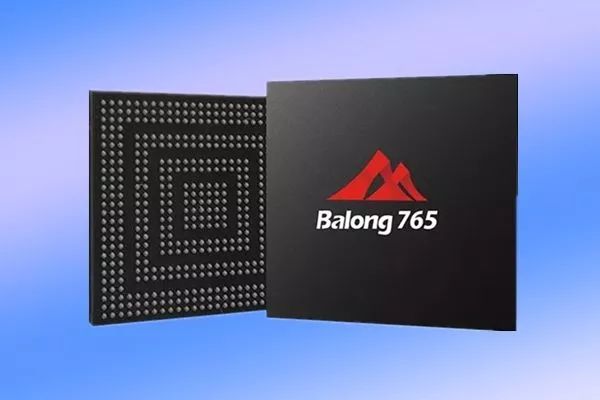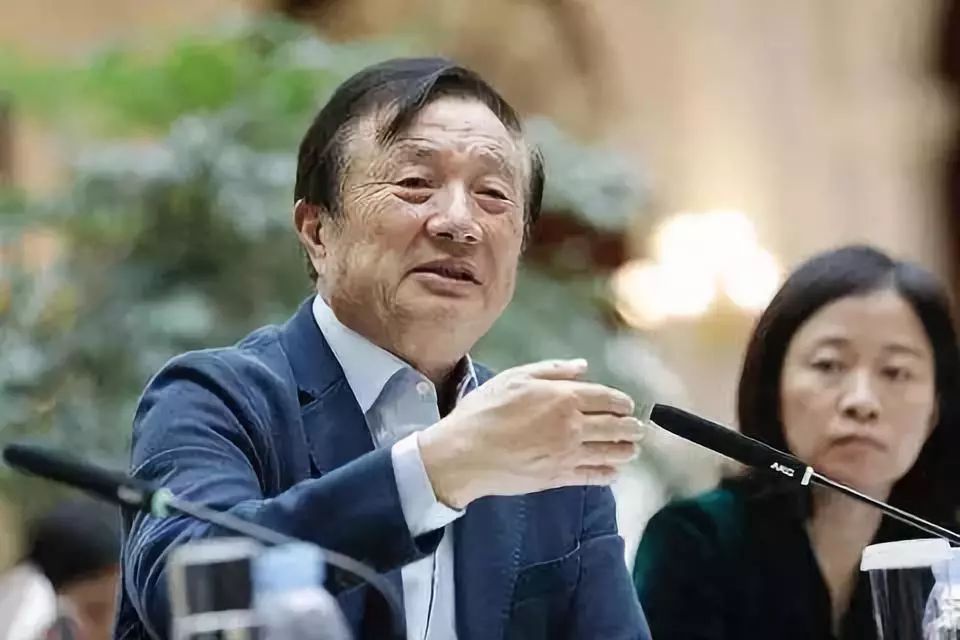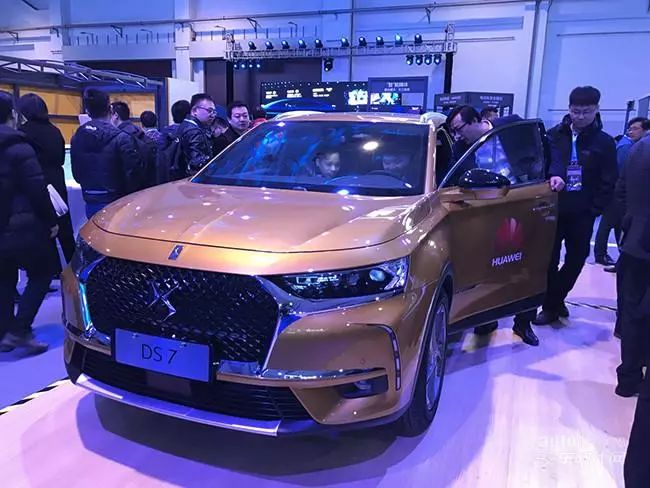This article is authorized to be reproduced from Cheyun (WeChat ID: cheyunwang), author Bai Ge.
Ren Zhengfei, is trending again.
Not long ago, he changed his usual low-profile approach and gave interviews to dozens of domestic and foreign media outlets in succession. He even completed his first TV interview with a domestic media outlet, CCTV “Face to Face.” According to public information, since Huawei was founded in 1987 until 2019, Ren Zhengfei has only given a total of less than 10 media interviews in the past 31 years.
In this rare voice, Ren Zhengfei mentioned the automotive industry for the first time. He expressed a clear attitude that Huawei will never cross into car manufacturing, but instead focus on improving the connected car and self-driving capabilities through their own technologies.
In fact, the impression of Huawei’s automotive layout within the industry has always been quite vague. Cheyun believes that for the past 5-6 years, relying on its own underlying technological capabilities, Huawei has been gradually infiltrating the automotive industry and attempting to become the core supplier of the intelligent connected car era. Although this infiltration process has been slow, its strength is deep, and under the surface of the revealed business model, a huge iceberg is forming.
Now, Huawei has never been so close to its automotive goals.
Entering the Connected Car Network and Aiming To Become the World’s number one
In recent years, the intelligent automobile industry has developed rapidly and has a very promising future. According to the US consulting firm IHS, it is predicted that by 2035, global sales of intelligent cars will exceed 10 million. McKinsey is even more bullish, predicting that by 2025, the market size of intelligent cars will reach 19 trillion US dollars.
Although the data is impressive, in the long run, this estimate is still too conservative. Once intelligent cars become practical and put into use, it will inevitably lead to the synchronous high-speed development of the entire industry chain, and even multiple related industry chains.
For example, when higher-level intelligent cars hit the road, most cities, roads, and infrastructure will undergo 5G network IoT transformations. And the connected car network, the cloud supercomputing center, and even the BeiDou satellite system will be continuously connected, calculated, and navigated accurately.
Therefore, the intelligent automobile industry is inevitably a red ocean.
Currently, whether traditional automakers such as Geely, BMW, or Internet giants BAT, or technology giants such as Apple, Nvidia, etc., they are all scrambling for a share of this market.
The automotive market is so vast, how can Huawei sit idly by?
As mentioned before, in 2013, when electric vehicles were gaining momentum, Huawei announced the launch of its in-vehicle module ME909T, entered the connected car network, and established the “Connected Car Business Unit.”
In fact, Liu Xiaobin, Vice President of Huawei Terminal Limited Company’s Mobile Broadband (MBB) product line, has said that as early as 2009, Huawei had already begun developing in-vehicle modules and had increased its R&D investment since 2011.Starting from 2014, Huawei has successively cooperated with Dongfeng Motor to develop the car networking technology and established cooperative relationships with GAC, SAIC, FAW, and others in various fields, including car networking, intelligent vehicles, and international business expansion.
In 2016, Huawei, together with Audi, BMW, Daimler, Ericsson, Intel, Nokia, and Qualcomm, jointly announced the establishment of the “5G Automotive Association” to integrate the resources of various giants, accelerate the research and development progress of unmanned vehicles, and allocate the required interconnected equipment in the R&D process.
In November 2018, Huawei and SAIC-GM-Wuling signed a strategic cooperation framework agreement to help partners achieve intelligent network transformation by relying on their technological advantages in industrial IoT, cloud computing, big data, 5G, and other fields.
Although Huawei is frequently making moves in the automotive industry, it has not yet touted its Internet car business. However, Huawei’s entry into the automotive field can be described as a big move.
According to media revelations, since announcing its entry into car networking in 2013, the car networking innovation center under Huawei’s central research institute began recruiting talents in the fields of intelligent driving, power battery system development and design, motors and electric drives, charging solutions, and overall vehicle design.
Currently, Huawei’s car networking business unit has a team reserve of thousands of people. The main research and development focus of the entire business unit is the core power system of future electric vehicles. At the same time, there is also a team specifically researching batteries and energy internally, namely Watt Lab.
Although the team is fully equipped and the research areas are not limited to one, Huawei’s external strategy is still only car networking, and it is strictly required to make it the world’s number one.
In April 2018, a strategic document on Huawei’s 2018 strategy issued by the Huawei Strategic Committee mentioned multiple business strategic focus areas, among which car networking was the first to be highlighted.
The document clearly stated that car networking is a high-value industry that needs to be quickly laid out, and the goal is simple and clear- to make car networking the world’s number one.
It is obvious that Huawei’s primary mission in the automotive industry is still to do car networking and become the core supplier of intelligent networked cars. However, to become a core supplier means that Huawei not only needs to have a better understanding of cars but also needs core technologies.## Huawei’s Layout in Connected Car Industry
In 2018, Huawei achieved rapid development in the automotive field and laid a foundation for its connected car products, with many key products on the market. From solutions to on-board terminals to network platforms, and to chips, Huawei has gradually formed a complete product chain in the intelligent automotive industry.
- The first commercial C-V2X solution, RSU
During the 2018 World Mobile Congress in Shanghai, Huawei announced its strategy for C-V2X (Cellular network based Vehicle to Everything) for the first time and released the first commercial C-V2X solution, RSU (Roadside Unit).
Based on this, Xu Wenwei, the director of Huawei, proposed to realize the coordination of people-cars-roads by means of cellular communication. Cars can become the next advanced mobile intelligent terminal. At the same time, people-cars-roads coordination will also become a prerequisite for autonomous driving.
The so-called vehicle-road coordination is based on C-V2X technology to effectively interact information between RSU and OBU (on-board unit) to enable drivers to understand traffic information and danger in the first time.
Even if it develops into autonomous driving in the future, it is not enough to merely rely on the intelligence of cars. It is also necessary to renovate the intelligent infrastructure of roads to obtain a better and safer travel experience.
At this congress, Huawei launched the first global RSU product supporting Uu+PC5 concurrency, which can support Uu and PC5 interface communication encryption, making communication safer and more guaranteed. It adopts wired and wireless access methods to flexibly connect signal lights and other road facilities for engineering deployment. It supports GPS and China’s BeiDou positioning system. The PC5 delay is less than 20 ms, and it supports the 20 MHz bandwidth of the 5.9 GHz band, which is adopted by most countries in the world for ITS frequency deployment.
- Huawei’s LTE-V2X on-board terminalAt the World Internet of Things Expo in September 2018, Audi, Volkswagen, FAW, Dongfeng, Changan, SAIC and other car manufacturers conducted V2X smart transportation scenario demonstrations using vehicles equipped with Huawei LTE-V2X (a wireless communication technology based on the evolution of mobile communication technology for connected cars).

It is understood that Huawei LTE-V2X onboard terminal is based on Huawei HiSilicon Balong 765 commercial chip development, designed specifically for the new generation of vehicle-to-vehicle communication in connected cars. By integrating Qianxun positioning’s sub-meter-level location service and fusion inertial navigation algorithm, the LTE-V2X onboard terminal can provide lane-level positioning capabilities for cars.
The successful demonstration of the Huawei LTE-V2X terminal solution in Wuxi also marks the entry of LTE-V2X from the industry incubation stage to the commercial deployment stage.
- OceanConnect Connected Car Platform
At the 2018 International Consumer Electronics and Communications Expo (CEBIT 2018), Huawei announced the OceanConnect Connected Car Platform, which is mainly dedicated to enabling intelligent networking of vehicles, the service-oriented transformation of car companies, and the intelligent evolution of transportation.
Currently, the integration of ICT (information and communication services) and the automotive industry has sparked a deep integration of connected cars. The Connected Car Platform is the key ICT infrastructure that enables car companies’ digital transformation and the “digital engine” of intelligent connected cars. Huawei’s OceanConnect Connected Car Platform provides car companies with “four capabilities”: connectivity, data enablement, ecology enablement, and evolution enablement.
Connectivity: Provides safe and reliable connections for cars, supporting one hundred million-level massive connections and one million-level high concurrency; through globally reachable public cloud deployment capabilities, satisfying car companies’ global business operations requirements.
Data Empowerment: By collecting and analyzing vehicle big data such as vehicle conditions and driving behaviors, a digital twin of people and cars is realized on the cloud. By analyzing precise driver behavior and travel scenarios, it enables intelligent content distribution and business recommendations.
Ecological Empowerment: Through data and business separation structure, it helps car companies control digital assets, gather third-party content and application ecosystems, and construct an ecosystem centered on car companies.
Evolution Empowerment: The connected car platform develops in coordination with V2X technology, from single vehicle intelligence to vehicle-to-vehicle collaborative intelligence, enabling future intelligent transportation and improving the safety and efficiency of social transportation as a whole.
Huawei has built the world’s largest front-end car networking project with French PSA Peugeot Citroen Group. The first car, DS 7, based on Huawei OceanConnect car networking platform, has been launched in China and Europe, providing consumers with innovative travel services.
- Balong 765 commercial chip
At the 2018 Mobile World Congress (MWC), Huawei released the world’s first 8-antenna 4.5G LTE modem Balong 765 (Barong 765).
In terms of specific functions, Balong 765 is the world’s first chip to support LTE Cat.19, with peak download speeds of 1.6Gbps in FDD network environments and 1.16Gbps in TD-LTE networks, making it the world’s first TD-LTE G-bit program.

In addition, Balong 765 is also the world’s first and only modem chip to support 8×8 MIMO technology, leading the industry in speed improvement and signal reception. Its spectrum efficiency is 80% higher than that of 4×4 MIMO, and it also supports LTE-V technology, which can provide more secure and stable connections for smart connected vehicles.
Car networking is a relatively broad term, not limited to a specific field, but also including chips, OS, voice, maps, cloud computing, AI, big data, 5G, V2X and autonomous driving.
Huawei has leading advantages in chips, cloud computing, AI, 5G, and V2X, especially in 5G technology.
Currently, existing 4G networks cannot meet the needs of fast intelligent cars in terms of bandwidth and latency. The development of 5G technology can solve this problem well.
Theoretically, 5G has a bandwidth of more than 10 Gb/s and a delay of only a few milliseconds. At a speed of 100 km/h, if the brake command is issued from the cloud, the delay distance caused by latency will only be 1.35 meters. Under a 4G network, this delay distance will exceed 10 meters.
Currently, Huawei’s 5G technology is relatively advanced worldwide, with numerous patents and ranking first globally. This has also made many countries very wary of Huawei’s development.The powerful 5G technology and increasingly complete product chain have showcased Huawei’s strength in the field of connected cars, and brought them a step closer to becoming the world’s number one.
Huawei’s self-driving chip may break industry monopoly
NVIDIA CEO Jensen Huang has publicly stated that the computing power required for autonomous driving is beyond anything that has been achieved by any computer in the past.
Therefore, autonomous driving computer chips are crucial for this industry. However, the global autonomous driving chip market is overwhelmingly dominated by Mobileye and NVIDIA, and these two companies are not in full competition with each other but rather each monopolizes their respective submarkets.
Mobileye mainly monopolizes the L2 level of the autonomous driving market, for which no chip manufacturer worldwide can currently compete. NVIDIA, on the other hand, fully dominates the L4 and above level of the autonomous driving chip market.
Although both Mobileye and NVIDIA are trying to break into their competitor’s market, there has been little progress. This means that the pace of global autonomous driving is mainly dictated by the two chip manufacturers.
However, Huawei’s self-developed autonomous driving chip may break this monopoly.
In the field of autonomous driving, Huawei’s layout mainly focuses on three areas: chips, computing platforms, and solutions, concentrating on computing and data capabilities, and chips are the foundation of their intelligentization strategy.
In October 2018, at Huawei’s annual developer conference, they announced the launch of the computing platform MDC 600 that can support L4 level autonomous driving, and their strategic partnership with Audi, whose cars produced in China will integrate this chip to achieve autonomous driving capabilities.
It is reported that the MDC 600 has eight of Huawei’s latest AI chips, the Ascend 310, and it also integrates a CPU and corresponding ISP module.
During the conference, Huawei claimed that the computing power of the MDC 600 is up to 352 TOPS (TOPS: trillion operations per second), and the overall system’s power consumption ratio is 1 TOPS/W. Compared to the latest generation of NVIDIA’s Drive PX Pegasus, which has a computing power of 320 TOPS and a power consumption ratio of 1 TOPS/1.56W, the MDC 600 proves to be more powerful.In addition, Huawei announced that MDC600 complies with the highest level of automotive standards, the ISO26262 ASIL-D level standard. It should be noted that currently, the widely used Drive PX2 by NVIDIA, in the demo cars of many autonomous driving startups, has not reached the automotive standards, and needs to be integrated and certified by the automakers themselves.
Currently, globally, the only SOC capable of meeting the automotive requirements to support L2-level autonomous driving demands with high computing power and meeting the vehicle requirements is Mobileye’s EyeQ series.
Meanwhile, Chinese autonomous driving chip startup Horizon Robotics’ “Starlight” reportedly fulfilled ISO 26262 ASIL-B level automotive requirements in early 2019.
Therefore, when Huawei’s MDC600 was launched, industry players were so “shocked”. After all, this may cause an impact on the current competition pattern of autonomous driving chips.
While it is clear that the importance of AI chips and US monopolies have prompted many Chinese technology companies to try to launch AI chips that support autonomous driving systems, Baidu’s “Kunlun” and Alibaba’s “Pingtouge” already have similar plans.
Despite this, it seems that Huawei’s entry into the market for autonomous driving AI chips is the most natural, since Huawei is currently the most substantial chip design company in China. Its subsidiary, HiSilicon, is also the semiconductor company with the largest revenue on the Chinese mainland.
Conclusion: Huawei may become the biggest winner of the intelligent connected vehicle era
Looking at the opportunities of intelligent vehicles, from AI chips to vehicle systems, from new energy batteries to 5G-connected cars, from image and voice recognition technology to high-precision 3D maps, Huawei has the strength to participate in all of these areas, and in fact, Huawei has been laying the groundwork for this for a long time.
In addition, at the end of 2016, China started to propose a development plan for intelligent connected vehicles. In this plan, the core keyword “intelligent” is based on chips, and “connected” is based on communication, and Huawei happens to be a giant in these two areas.
However, the pressure of external environments and the strength of competitors are relative. Currently, the external environment that Huawei has to face is not very friendly. The U.S. embargo on Huawei technology, accusations of Huawei “stealing commercial secrets”, and product bans all placed significant pressure on Huawei in the external environment.In the automotive industry, whether it’s the connected car or autonomous driving, tech giants including Google, Apple, Baidu, Alibaba, automotive giants including Tesla, GM, Ford, Toyota, suppliers including Intel, Mobileye, and hundreds of startup companies are all investing heavily in research and development.
However, competition drives progress, and crisis breeds opportunity. As long as it can seize the opportunity, Huawei may become the biggest winner in the era of intelligent connected vehicles.



This article is a translation by ChatGPT of a Chinese report from 42HOW. If you have any questions about it, please email bd@42how.com.

